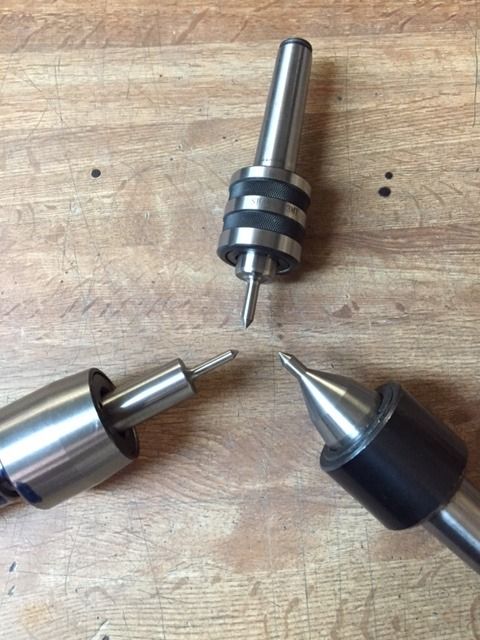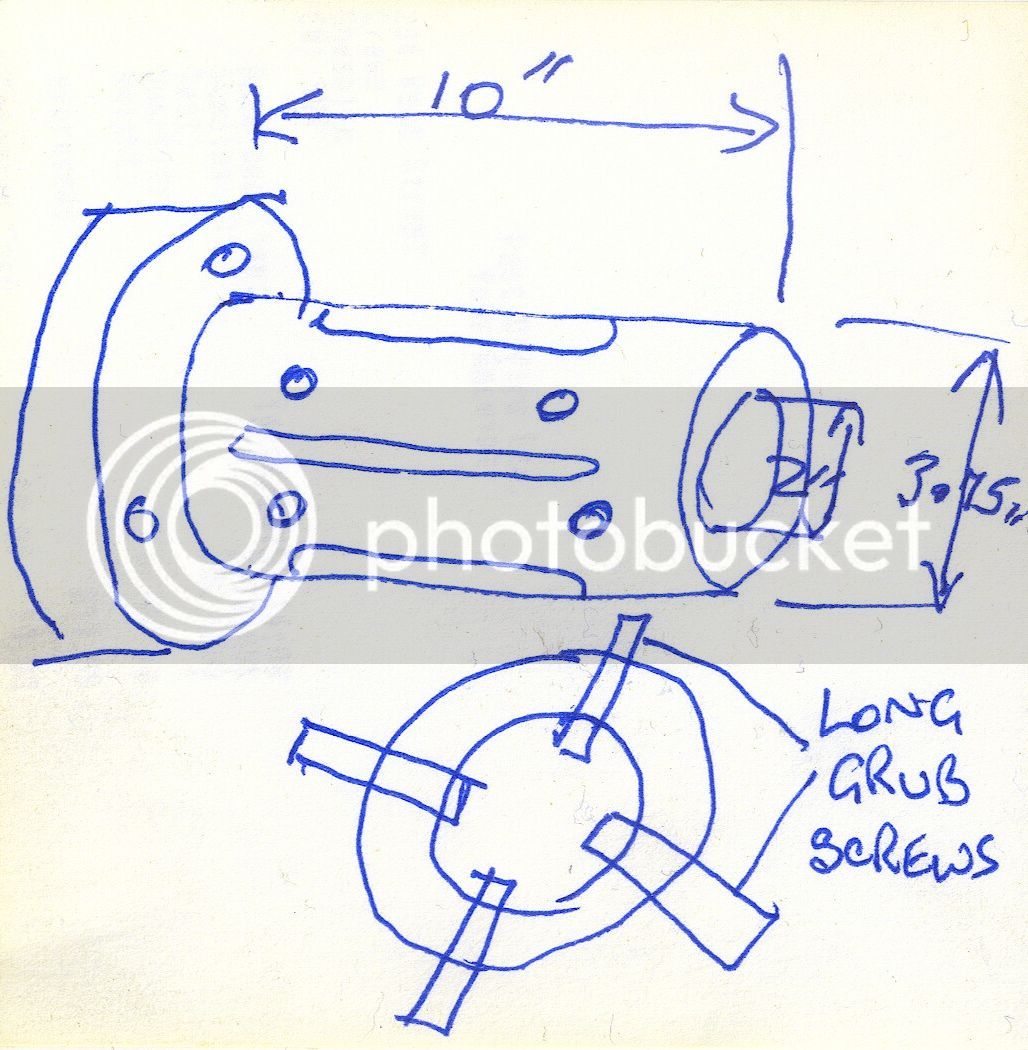Modified live centers for turning small diameter work that need support and clearance for the lathe tool.
The larger center in the picture was disassembled and the bulk of the material behind the center point was turned back. Carbide cutting tool was able to handle the hardness. The original tip was left intact. ( lower r.h. view )
The two smaller centers use a ball bearings and new shafts with the center point were made. These are the easiest to modify since the shaft is supported by ball bearings, not needle bearings like the larger heavy duty center.The tips were case hardened. With careful setups the centers run true without the need to grind. The extended length gives room between the tail stock quill and the insert tool holder that I use.

The larger center in the picture was disassembled and the bulk of the material behind the center point was turned back. Carbide cutting tool was able to handle the hardness. The original tip was left intact. ( lower r.h. view )
The two smaller centers use a ball bearings and new shafts with the center point were made. These are the easiest to modify since the shaft is supported by ball bearings, not needle bearings like the larger heavy duty center.The tips were case hardened. With careful setups the centers run true without the need to grind. The extended length gives room between the tail stock quill and the insert tool holder that I use.




















![Learning AutoCAD Civil 3D 2014 [Online Code]](https://m.media-amazon.com/images/I/51F3yi9fokL._SL500_.jpg)
































![DreamPlan Home Design and Landscaping Software Free for Windows [PC Download]](https://m.media-amazon.com/images/I/51kvZH2dVLL._SL500_.jpg)








